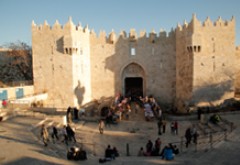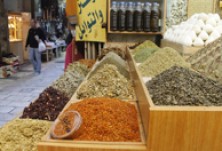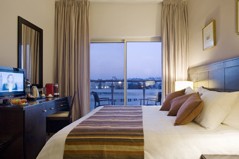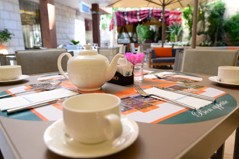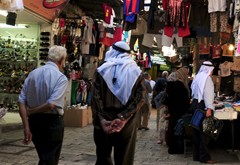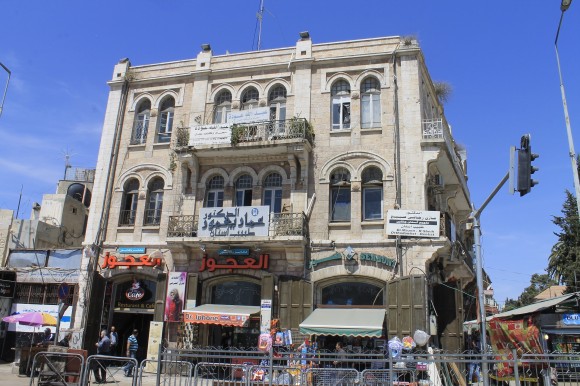To arrive at the Hindiyyeh building, the next station of this trail, it is preferable to walk south 500 meters down Nablus Street towards Bab Al-Amoud. On the south, one can see a group of buildings which include the YMCA hostel, the American Consulate building, Sa’d and Sa’eed Mosque, the bus station, and the Columbia building, arriving at Hindiyyeh building at the crossing between the end of Nablus street and Al-Sultan street, adjacent to Columbia building.
Name and Location
The building was named after a Jerusalem family which owns it. It enjoys a prime location, with the German Schmidt School to the east, and Bab Al-Amoud, the most important entrance to the Old City, a few steps to the south.
Architectural Fabric
The building architecture is a true example of Arab architecture outside the City Wall, typical of British mandate period construction around the end of the 1930s. The building has three floors, with the first designed to hold commercial stores, and the second and third for offices. The main feature of the building is that it merges old, local architectural traditions with some modern, imported elements, including large windows, internal open spaces, multi-levels, floor tiles, open balconies surrounded by iron railings, and hanging balconies carried by cables, which are features of architectural modernization. The local traditions can be seen in the alternating colors of stone course (Al-Ablaq), window arches, and round, protruding ornaments of Arabesque design, reflecting those that adorn the city wall in Bab Al-Amoud area and other 16th century Ottoman architectural styles.
Approach
In order to feel the differences depicted in the architecture of this trail, it is suggested that the visitor takes a closer look at the building opposite to the Hindiyyeh building, namely, the Schmidt School building, where architectural units resembling European towers during the middle ages are concentrated, and where the building stone fabric is free from any colors or Arabesque ornaments, keeping in mind that the building was constructed in 1898.

